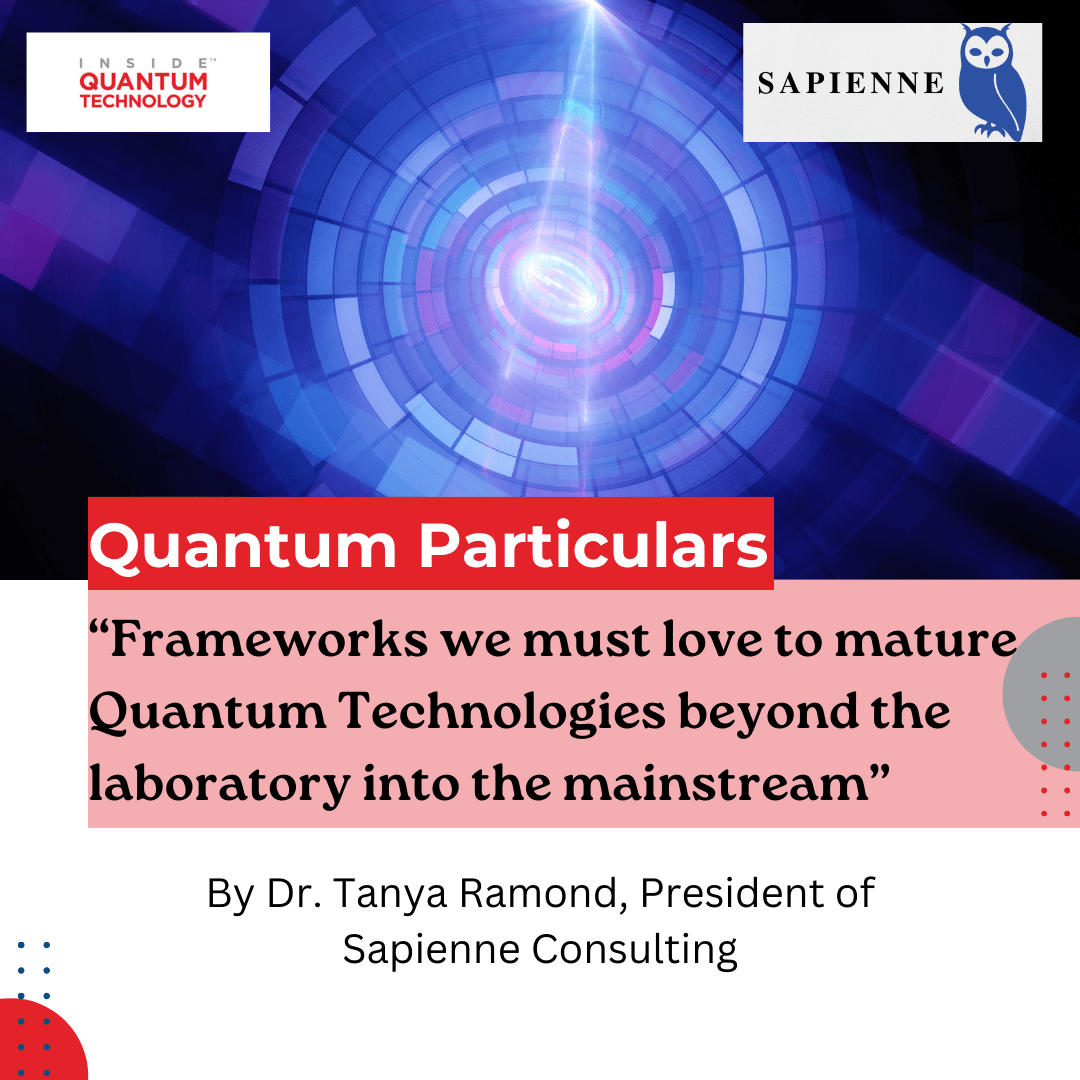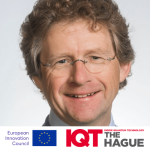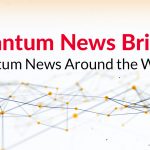Quantum Particulars Guest Column: Frameworks we must love to mature Quantum Technologies beyond the laboratory into the mainstream

“Quantum Particulars” is an editorial guest column featuring exclusive insights and interviews with quantum researchers, developers, and experts looking at key challenges and processes in this field. This article is written by Dr. Tanya Ramond, President of Sapienne Consulting, discussing the frameworks needed for quantum computing adoption.
Quantum 2.0 is a technological revolution holding profound promise to shape society, on par with inventions such as the transistor, the laser, or space flight. Those pushing the technology into commercial applications are at the forefront; they are pioneers. However, the only way to transform society through new quantum capabilities is to make products people adopt and use.
Right now, Quantum 2.0 is dominated by research and development efforts, such as developing the Quantum building blocks for Quantum computing, but this is really only the start. Quantum is subject to the same maturation patterns as any other emerging technology, in that sense it is not unique. Fortunately, there are tried and true frameworks and best practices we can learn from as we move forward. To build a product, there must be an emphasis on use case development or concept of operations. It also requires adopting skills in engineering and project management, as well as adopting a system-level mindset around the Whole Product, as would be the case in the eyes of the customer.
Use Case Development
The need for use cases is a fundamental driver in conceptualizing the application of a technology. A ‘use case’ (or, in some specialties, a ‘concept of operations’) is a narrative that describes the context around how a user would apply a technology to a problem. This is a ‘boots on the ground’ account that clarifies an application’s who, what, where, when, and why. This is a vital step to give a mental picture to investors, future customers, non-scientific observers, and influencers to win over proponents and that the technology has legs. It is a starting point for all other aspects of product development. The Quantum Ecosystem is doing great work and is currently developing various use cases across many industries as to how it sees Quantum Applications emerging.
However, the next step after use case development is product discovery. These are not the same thing.
Product discovery is an additional layer of granularity as to what product to design and build and why. The customer discovery work requires understanding in detail what to design flows into the engineering specifications the product development team uses to start their work. This is very difficult to do, as it requires not just customer research to drill down into the actual problem being solved as well as quantifying the potential benefit to the customer; it also requires committing to the development costs to address a particular market segment, as well as justification that there is enough of a market to carry the required profit.
For Quantum 2.0, where the use cases are in many cases never-before-conceived, this can sometimes move into ‘crystal ball’ territory.
Marrying Physics and Engineering Cultures
The Quantum 2.0 ecosystem is currently skewed more towards the research realm as we know that many quantum technologies are considered ‘emerging.’ This means much of the workforce have PhDs, have only worked in academic or national lab settings, and perform heroic acts to create one-off instrumentation to deliver a publishable data set. As they move from proof-of-concept R&D into the world of product development, different skill sets are needed that are usually not in the wheelhouse of those on the research side. Engineering is an approach needed when designing and building something that can be manufactured in volume and comes with its challenges and different acts of heroism are required.
Both worlds are required to bring emerging technology into product development, yet the two worlds are not always accustomed to working with each other. Great R&D scientists do not usually make great engineers, and vice versa. Both are essential and highly valuable. However, engineering formalism, as well as engineering organizational structure , is not something that can be organically learned; it must be deliberately adopted.
Other frameworks vital to the engineering world are government grants and program management. For the world of emerging technologies, R&D funding from government agencies is often an essential bridge to get to commercial sustainability. Still, these grants come with their own structures, their own milestones, and their own schedules. Program management, a discipline needed to provide structure around technology commercialization, again must be learned. A great technical program manager is highly prized, a crucial bridge between engineers and scientists.
So, how do you balance the contributions and push-pull of these two cultures? Disciplines such as aerospace have decades of experience with the handoff and interplay between science-based requirements and engineering, as well as how to structure an engineering organization, and can be a great resource.
Whole Product Frameworks and Interfaces
Another framework that is useful to keep in mind for the Quantum 2.0 revolution is that of the whole product.
So often in technology, a product offering only addresses part of a customer use case. This leaves the burden on the customer to kludge together the remaining necessary functionality from existing partial solutions or to develop it themselves.
For example, if you want to build a communications system connecting multiple terminals, perhaps one or more vendors develop their own terminals, but if the terminals do not interface with each other, this problem must be solved by the customer before the system can be used and adopted. In many emerging technologies, just building the piece of hardware itself is a major feat, and thought is not applied to how to work these system-level interfaces. However, this type of integration is crucial for Quantum.
The computers of tomorrow will not be pure quantum computers or pure classical computers, instead they will be hybrids. Much of the challenge will move from pure R&D into the systems engineering and product mindset needed to think through these design and interface issues to maximize customer adoption of the new technology. This is an exciting idea space to be transitioning to as we realize more and more of the impact that Quantum Technologies will bring to our world.
Tanya Ramond, PhD MBA works at the intersection of R&D, engineering, and business strategy in areas like quantum, aerospace, photonics, and cleantech. She is the President of Sapienne Consulting, a firm dedicated to commercialization and product strategy for deep tech entrepreneurs and entrepreneurs. She earned her PhD in physics from the University of Colorado JILA, and an MBA from the University of Denver.



















